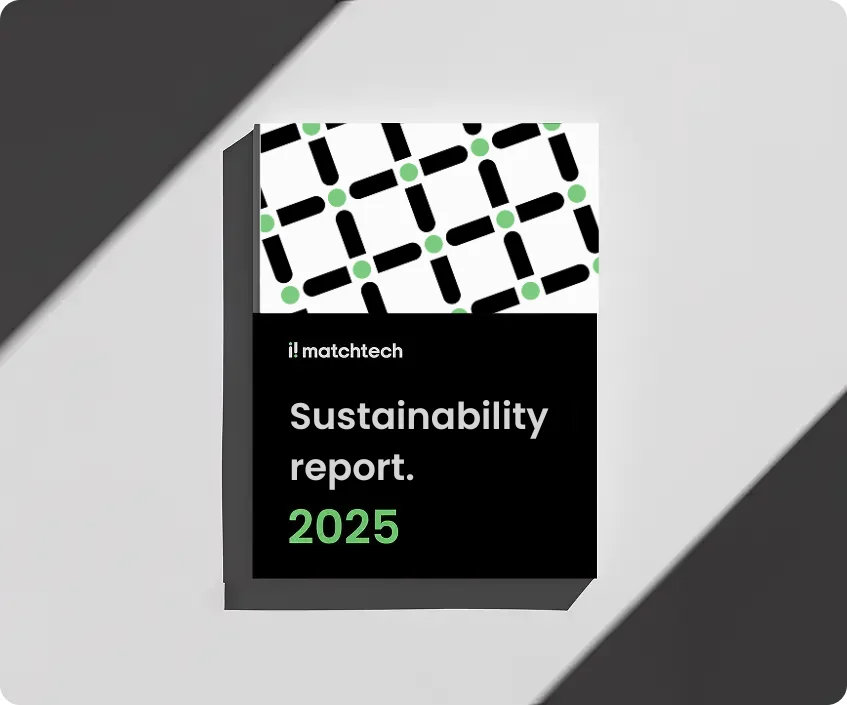Global pandemics. Semiconductor shortages. International trade wars. Labour scarcity. Tax and national insurance increases.
Procurement and Supply Chain have never occupied so much public and boardroom attention as they have in the last decade. Speak to anyone in the profession and they’ll recall 14-hour days sourcing PPE during the pandemic or building risk models around trade tariffs that jumped 200% overnight. We each have our own stories of fast decision-making under pressure, decisions that saved our organisations from spiralling costs or operational collapse.
And yet, in many boardrooms, Procurement still feels undervalued. Why, despite the evidence, are Procurement Leaders still fighting to be heard alongside HR, Finance, or Operations? Why does the function, trusted with the largest proportion of corporate spend, still struggle for a consistent seat at the table?
It’s time to change that narrative. And the conversation around workforce strategy is where Procurement can, and must, take its rightful seat.
Procurement’s Rising Influence: But Not There Yet

The latest CIPS Global State of Procurement & Supply 2025 report reveals a profession gaining traction. A quarter of respondents now report that their Chief Procurement Officer holds a permanent seat on the main board, up from just one fifth last year. More than 40% say their relationship with the board is “closely aligned.” This is progress.
But that same report highlights something telling: in many organisations, Procurement still reports into Finance or Operations. While this structure works in some contexts, it often reinforces outdated perceptions that Procurement’s role is cost control rather than strategic enablement.
Meanwhile, the workforce landscape has evolved dramatically. The traditional boundaries between “HR strategy” and “Procurement strategy” have blurred. The rise of contingent labour, outsourced projects, and managed service platforms means that a significant share of workforce spend now sits within Procurement’s remit, but often without Procurement’s full strategic voice being heard.
The Workforce is Now a Supply Chain
In a world of skills shortages and flexible work, people have become the ultimate supply chain. How we engage them, whether through permanent hires, statement-of-work contracts, or outsourced delivery, has as much to do with supply risk, compliance, and value creation as it does with headcount.
Procurement professionals are uniquely equipped to manage this complexity. We understand risk diversification, supplier relationships, and value-for-money models. We speak the language of agility and performance outcomes, which is precisely the language modern workforce strategy demands.
Yet, in many organisations, HR still leads workforce planning with limited Procurement involvement. This gap leads to duplication, misaligned goals, and missed opportunities.
Take, for example, contingent workforce frameworks. Too often, Procurement negotiates rate cards and compliance controls while HR defines talent requirements and culture-fit in isolation. The result is disconnected systems, inconsistent supplier performance, and inflated total workforce costs.
When Procurement and HR collaborate, supported by data and technology, the result is transformational. Procurement can bring commercial discipline, supplier intelligence, and innovation to the table. HR can ensure alignment with organisational culture and capability goals. Together, they can redefine workforce value.
Lessons from the CIPS Global Findings
The 2025 CIPS report provides compelling evidence that Procurement is evolving toward strategic leadership. Three findings in particular resonate with the workforce conversation:
- Strategic and Leadership Skills Now Top the Agenda
Nearly half of procurement leaders surveyed identified “being strategic” as their top skill to develop this year, followed by leadership and influencing. This shift from transactional to transformational thinking is exactly what’s needed to amplify Procurement’s boardroom voice.

- Automation and AI Are Accelerating the Function’s Evolution
83% of respondents believe automation will improve efficiency, freeing Procurement from manual processes to focus on strategic collaboration, such as designing agile workforce models and supplier ecosystems that support innovation.
- Procurement is Becoming the ‘Voice of Value’
A CPO quoted in the report put it perfectly: “Procurement is part of the organisation’s brains trust.” When Procurement brings data-driven insights on spend, performance, risk, and ESG impact, it earns credibility as a value architect rather than a gatekeeper.
In short, the profession is ready. The moment now calls for confident leadership in new strategic domains, including workforce strategy.
Reframing Procurement’s Role in Workforce Strategy
So, what does it look like for Procurement to earn its seat at the workforce strategy table?
Here are five principles senior leaders can embrace.
1. Adopt a Workforce Supply Chain Mindset
Treat workforce supply like any other critical category, one that demands visibility, diversification, and resilience. Map your organisation’s total workforce spend, from contingent labour and SOW engagements to professional services. Use this visibility to identify risks, cost inefficiencies, and strategic opportunities.
2. Lead with Insight, Not Process
Procurement leaders who win board attention don’t lead with policy; they lead with insight. Translate workforce data into business language: “Here’s where we’re over paying for duplicate skillsets,” or “Here’s how supplier consolidation could free up 8% of budget for innovation.” When Procurement shows how workforce strategy drives business outcomes, influence follows.
3. Collaborate to Co-Own Talent Outcomes
HR owns talent attraction and retention; Procurement owns commercial enablement and compliance. The organisations that thrive are those where the two functions co-create workforce strategy, agreeing KPIs that measure both human and financial value.
4. Champion Responsible Workforce Sourcing
The same rigour Procurement applies to sustainability, diversity, and ethics in supply chains must extend to workforce engagements. Ethical labour practices, inclusion, and carbon-conscious project delivery are now board-level imperatives. Procurement has the frameworks and governance skills to lead this agenda.
5. Invest in Leadership Presence and Storytelling
The CIPS report is clear: leadership, influencing, and communication are the skills procurement professionals most want to develop. Building board-level influence means telling a clear story, one that connects procurement’s commercial achievements to the organisation’s strategic priorities, from growth to ESG.
From Procurement Function to Business Partner
It’s encouraging that two-thirds of respondents in the CIPS study describe Procurement as having a positive influence on spend decisions. Yet, only a third say Procurement is a trusted business partner that is truly embedded in decision-making.
The opportunity for senior procurement leaders is to close that gap. That means evolving beyond the function’s traditional operational KPIs such as savings, compliance, and risk reduction, and focusing on strategic outcomes like capability, innovation, resilience, and value creation.
At Matchtech, we’ve seen first-hand how this shift plays out in the workforce space. When Procurement owns the strategy for how professional services and contingent talent are sourced and managed, organisations gain greater control, cost transparency, and agility. More importantly, they unlock new value such as access to niche expertise, faster project delivery, and stronger supplier relationships.
A Call to the Boardroom
The CIPS 2025 findings show Procurement is more globally influential than ever. Over half of surveyed leaders now influence supplier decisions beyond their own markets, and headcounts are rising because functions are seen to add value. But this momentum must translate into strategic representation where it matters most: the boardroom.
Boards need Procurement leaders who understand workforce dynamics, digital transformation, and ESG governance. Procurement professionals must be ready to step into that space with confidence, backed by data, technology, and commercial acumen.
In many ways, Procurement’s seat at the table is no longer something to ask for; it is something to take. Because in an age of geopolitical turbulence, automation, and talent scarcity, no organisation can afford to design workforce strategy without Procurement in the room.

Final Thoughts
Procurement has already proved its worth in crisis, navigating pandemics, trade wars, and supply chain shocks. The next chapter is about proving its worth in shaping growth.
By combining commercial intelligence, human insight, and digital capability, Procurement leaders can transform how organisations attract, engage, and empower their workforces.
The profession’s evolution from cost controller to value creator is already underway. The challenge now is to make sure that evolution is visible, influential, and permanent, right at the top table.




